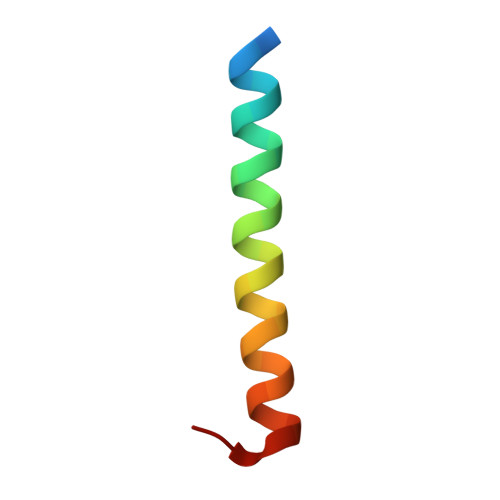Structural Insight into KCNQ (Kv7) Channel Assembly and Channelopathy.
Howard, R.J., Clark, K.A., Holton, J.M., Minor, D.L.(2007) Neuron 53: 663-675
- PubMed: 17329207
- DOI: https://doi.org/10.1016/j.neuron.2007.02.010
- Primary Citation of Related Structures:
2OVC - PubMed Abstract:
Kv7.x (KCNQ) voltage-gated potassium channels form the cardiac and auditory I(Ks) current and the neuronal M-current. The five Kv7 subtypes have distinct assembly preferences encoded by a C-terminal cytoplasmic assembly domain, the A-domain Tail. Here, we present the high-resolution structure of the Kv7.4 A-domain Tail together with biochemical experiments that show that the domain is a self-assembling, parallel, four-stranded coiled coil. Structural analysis and biochemical studies indicate conservation of the coiled coil in all Kv7 subtypes and that a limited set of interactions encode assembly specificity determinants. Kv7 mutations have prominent roles in arrhythmias, deafness, and epilepsy. The structure together with biochemical data indicate that A-domain Tail arrhythmia mutations cluster on the solvent-accessible surface of the subunit interface at a likely site of action for modulatory proteins. Together, the data provide a framework for understanding Kv7 assembly specificity and the molecular basis of a distinct set of Kv7 channelopathies.
Organizational Affiliation:
Chemistry and Chemical Biology Graduate Program, University of California, San Francisco, CA 94158-2330, USA.


















